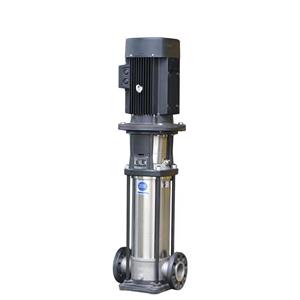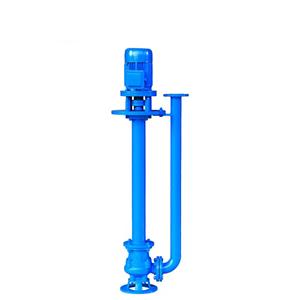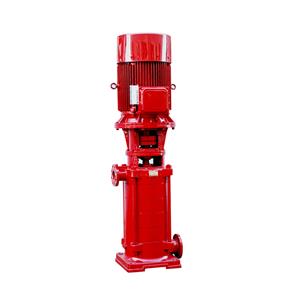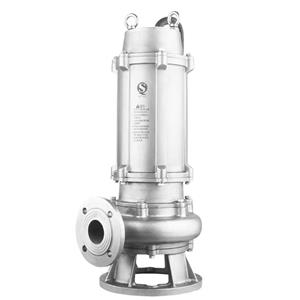Pump Technologies Dominating VFD Systems
The quiet revolution in building water management hinges on Variable Frequency Drive (VFD) water supply systems. These intelligent systems dynamically match pump output to real-time demand, slashing energy consumption by up to 60% compared to fixed-speed alternatives. Central to their performance is the critical choice of pumping technology. This article explores the pump types most frequently deployed in VFD water supply applications and the engineering logic behind their dominance.
The Reigning Champion: Multistage Centrifugal Pumps
Over 90% of commercial and municipal VFD water systems rely on vertical multistage centrifugal pumps (like those shipped by GAOXIAN in the featured image). Their dominance stems from key advantages:
High Efficiency Across Speeds: Maintain excellent hydraulic efficiency even when VFDs reduce motor RPM, crucial for partial-load energy savings.
Stepped Pressure Capability: Multiple impeller stages generate sufficient pressure for high-rise buildings without needing oversized components.
Compact Footprint: Vertical inline design minimizes installation space – a critical factor in plant rooms.
VFD Compatibility: Centrifugal pumps obey the Affinity Laws (Flow ∝ Speed; Pressure ∝ Speed²). This predictable relationship allows precise VFD control.
Robustness & Low Maintenance: Simple design with limited wear parts ensures longevity under continuous VFD cycling.
Typical Use: High-rise residential towers, hospitals, hotels, office complexes, and municipal pressure boosting stations.
Key Contender: End-Suction Centrifugal Pumps
For mid-rise buildings or systems with less extreme pressure demands, robust end-suction centrifugal pumps are a common choice:
Cost-Effectiveness: Generally lower initial cost than multistage pumps.
Suction Capability: Superior NPSHr (Net Positive Suction Head required) performance suits tank suction scenarios.
Simplicity & Serviceability: Easily maintained design, widely understood by technicians.
Typical Use: Smaller commercial buildings, industrial process water loops, and integrated hydropneumatic tank systems with VFD control.
Specialized Application: Axial Flow Pumps for High Flow/Low Head
While less common in standard building services, VFD-controlled axial flow pumps excel in specific high-volume, low-pressure scenarios:
Massive Flow Rates: Designed to move extremely large volumes of water efficiently.
Low Head Optimization: Operate optimally in applications requiring minimal pressure increase but vast flow (e.g., raw water intake, large-scale flood control).
VFD Synergy: VFDs allow efficient turndown from their typically high baseline flow.
Typical Use: Large irrigation schemes, raw water transfer, power plant cooling water circulation, stormwater pumping stations.
The Pressure Stabilizer: Jockey Pumps
Essential companions in VFD systems are small jockey pumps:
Pressure Maintenance: Manage small system leaks and maintain precise network pressure during near-zero demand periods (preventing the main VFD pumps from constantly cycling on/off).
Fixed Speed Simplicity: Usually single-speed centrifugal pumps sized for minimal flow.
Extended Main Pump Life: Reduce wear and tear and unnecessary starts on the larger, costly VFD pumps.
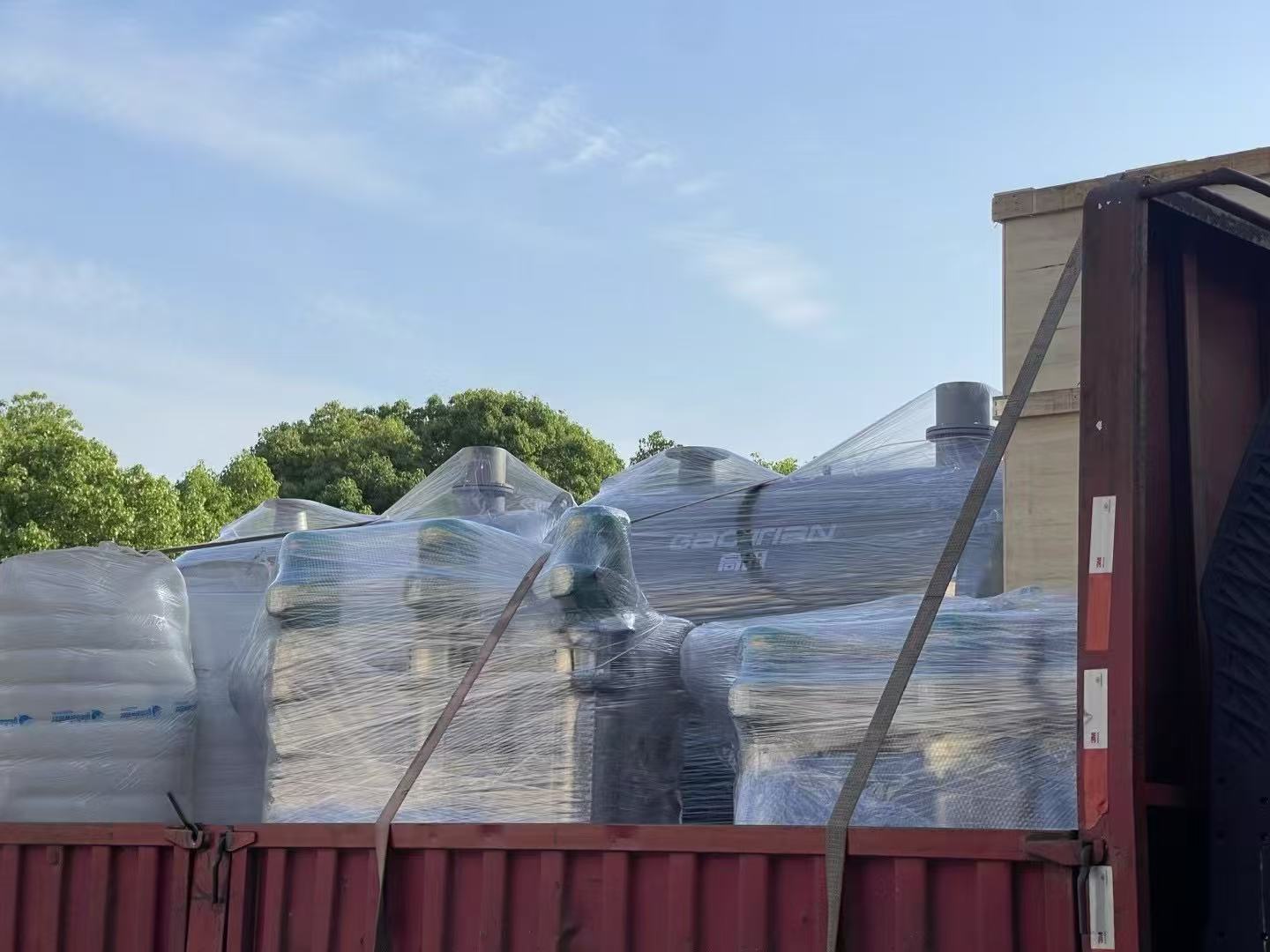
Typical Use: An integral part of every packaged VFD water supply unit.
Advanced Niche: Regenerative Turbine Pumps
For applications requiring very high pressure from a small package at low-to-moderate flows:
High Single-Stage Pressure: Generate significant pressure without multiple stages.
Compactness: Very space-efficient design.
Sensitivity Note: Require careful VFD control and system design due to steeper performance curves.
Typical Use: Specialized industrial processes, certain high-pressure booster applications.
Why Centrifugal Dominates with VFDs: The Physics & Control Harmony
Affinity Law Alignment: Centrifugal pump performance parameters change predictably with speed. VFDs directly exploit this for precise control.
Flat Torque Demand: Centrifugal pumps require significantly lower torque at reduced speeds, putting less stress on the VFD and motor.
Efficiency Curve: Well-designed centrifugal pumps maintain good efficiency over a wide range of operating points when controlled by a VFD.
The Unseen Factor: System Design & Integration (Beyond the Pump)
The shipment image of GAOXIAN pumps highlights that the pump is just the core. Effective VFD water supply relies on seamless integration with:
Advanced VSD Drives: The intelligent controller adjusting motor speed based on sensor feedback.
Pressure Sensors: Real-time network monitoring.
Programmable Logic Controllers (PLCs): Implementing control strategies (e.g., constant pressure, proportional pressure).
Bypass Systems: Ensuring redundancy.
Accumulator Tanks: Minimizing pump cycling at very low demand.
GAOXIAN: Delivering Robust Pumping Solutions
The featured shipment image showcases GAOXIAN’s commitment to robust industrial pumping technology. While specific pump internals aren't visible beneath the protective film, their standard range typically includes precisely the VFD-optimized vertical multistage and end-suction centrifugal designs that dominate this market. Careful packaging ensures reliable delivery for integration into critical water infrastructure worldwide.
Conclusion: Efficiency Through Technology Synergy
Variable Frequency Drive water supply has become the undisputed standard for efficient and responsive pressurized water delivery. While centrifugal pump technologies (especially vertical multistage) form the overwhelming backbone of these systems due to their inherent compatibility with VFD principles and proven reliability, effective implementation requires a holistic approach integrating optimized pumps, intelligent drives, precise sensors, and resilient system design. As the global emphasis on energy conservation and water sustainability intensifies, the synergy between VFD control and advanced centrifugal pumping technology, as delivered by manufacturers like GAOXIAN, will remain essential for the future of intelligent water management.

